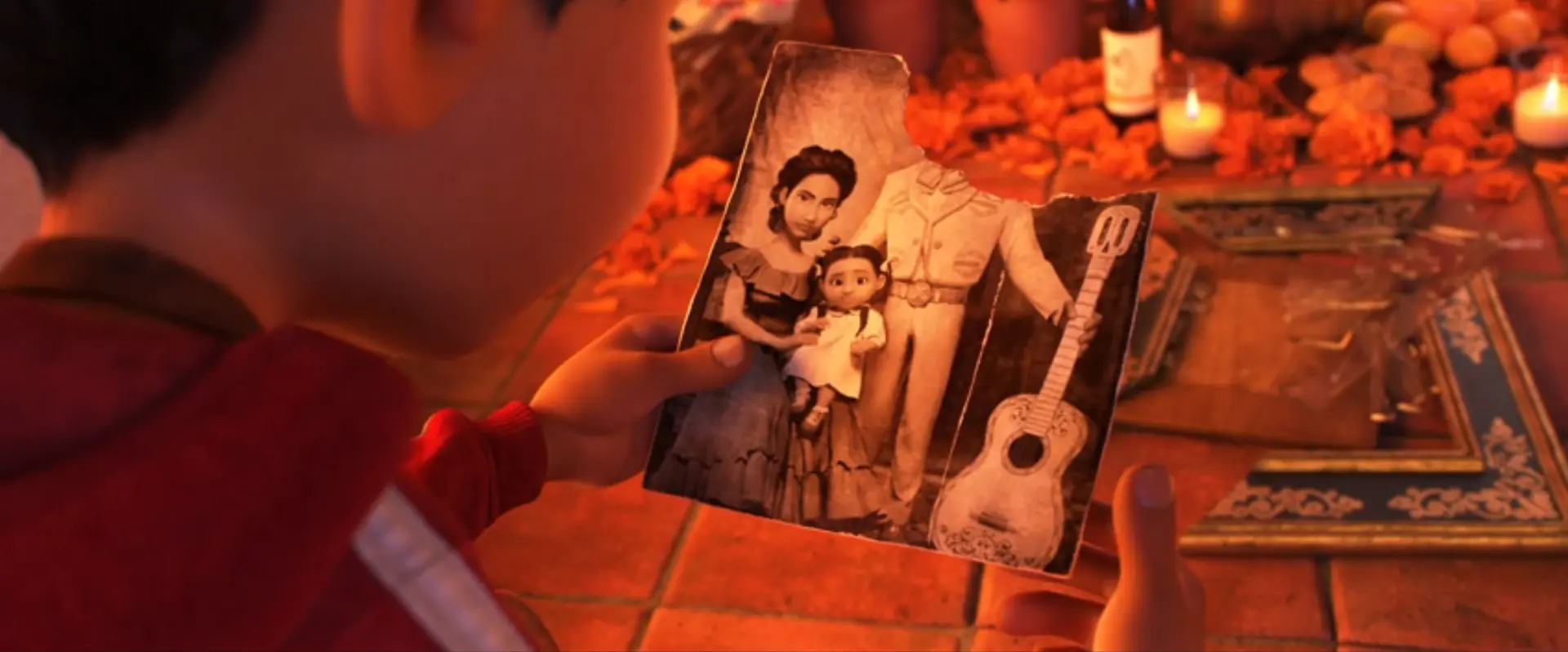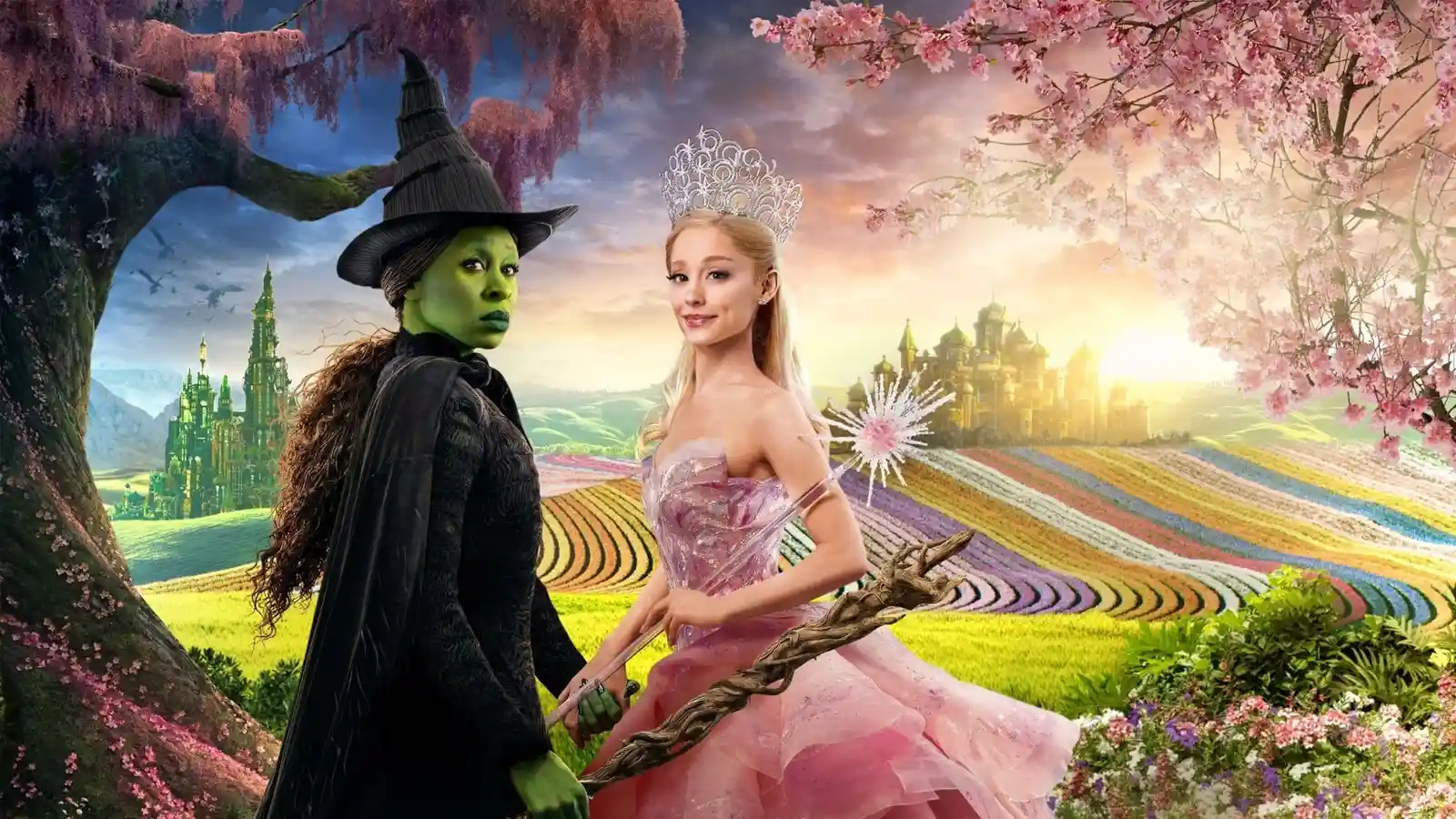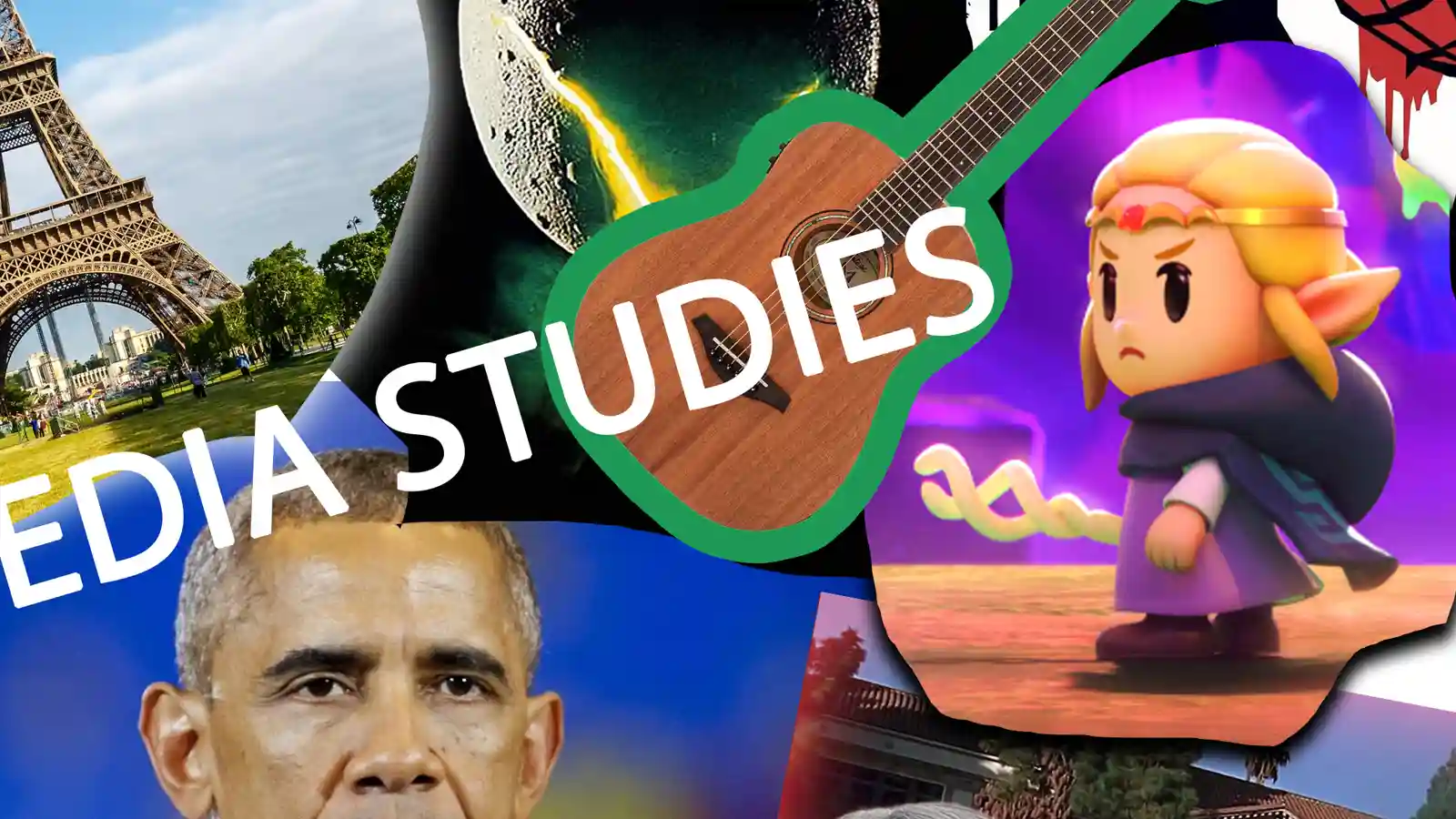Action and Enigma Codes
Narratives are driven by two codes. This guide will take you through both concepts.
Two Essential Narrative Codes
Roland Barthes argued there needed to be a clear sequence of events for the narrative to make sense to the audience. These beats of the story will help with “the coordination of the actions represented” or contain a “revelation of truth”.
Although our introduction to Barthes’ narrative codes goes into more detail about how meanings are produced in stories, we want to focus on the action and enigma codes because they form the chronology of the narrative.
Contents
Action Codes
Action codes are significant plot points that drive the narrative forward and create tension because the audience will want to see the outcomes and consequences of the scene. The action could be as simple as a knock on the door or as epic as the chosen one being dispatched on a quest to rescue the princess who has been kidnapped by the villain. Importantly, each action leads to a reaction and pushes the story its next stage.
Disruptions and Repairs
Perhaps the most obvious actions codes are those events which disrupt the protagonist’s routine and set up the rest of the story.
In Harry Potter and the Philosopher’s Stone (2001), for example, Hagrid delivers the letter to confirm Harry’s acceptance into Hogwarts and starts the hero’s journey into the wizarding world. When Katniss Everdeen volunteers as a tribute in The Hunger Games (2012), the narrative focuses on her experiences in the Capitol and her fight for survival in the arena.
Even the disruptions in videogames can be considered action codes. The opening sequence in Tears of the Kingdom (2023) features Link and Zelda exploring the cavern beneath Hyrule Castle where they are attacked by the mummified Demon King. Zelda is thrown into the depths and vanishes, but Link awakens on the Great Sky Island and begins his quest to find the princess.
The dramatic conclusions to these three narratives are also action codes. Harry restores order to Hogwarts by refusing to give the stone to Voldemort and defeating Quirrell, Katniss and Peeta make a pact to consume the poisonous nightlock berries but are declared co-victors by the Gamemaker, and Link uses the Master Sword to shatter the Demon Dragon and reunite with Zelda.
If you are unfamiliar with the terms disruption and repair, read our introduction to Tzvetan Todorov’s narrative theory. You could also define these events as inciting incidents and resolutions. Either way, action codes are essential for moving the narrative forward and drawing it to a close.
Finding Nemo
The opening sequence to Finding Nemo (2003) is a great example of an action code because it has a tremendous influence on our interpretation of the father, Marlin.
The theatrical release begins with a depiction of life in the coral reef. Coral appreciates her “desirable” world with “great schools and the amazing view” but wonders why they need such space at the drop off. Marlin dismisses her concerns and imagines a wonderful future together with their kids who “deserve the best”. Sadly, their happiness is disrupted by a vicious barracuda.
When Marlin wakes up from being knocked unconscious, he discovers Coral is dead and only one egg has survived. The vibrant colour of the reef is now a lifeless grey, the rock is empty and dark, and Marlin’s calls into the abyss are left unanswered. He discovers one precious egg has survived and whispers, “Daddy’s got you.”
The barracuda attack (action code) positions the audience to sympathise with Marlin’s determination to protect his son because we fully understand he is reacting to the tragic event. Of course he is going to make sure Nemo is safe: “I promise I will never let anything happen to you.”
In an interview with UNILAD, Pixar Animator, Jason Deamer, said the audience “originally” learnt about Coral’s death “through flashbacks” later in the film.
Imagine you were watching the test screening of the film, and the narrative opened with Marlin taking Nemo to school instead. You would know nothing about the barracuda and Coral’s death. When Marlin shouts at Nemo for getting too close to edge of the reef, you might see the father as an “overprotective, annoying character”.
By changing the chronology of the narrative and placing this tragic action code at the start, the director, Lee Unkrick, made sure the audience connected positively with Marlin and created a more satisfying story.
Calls to Action
Calls to action are prompts in advertisements that encourage the audience to take a specific action, such as buying the product or service, signing up to subscription, or following a social media account. Common phrases include “Buy Now”, “Add to Cart”, “Read More” and “Follow”.
Some prompts create a sense of urgency: “Limited Offer”. Or emphasise the value proposition: “Free Trial”. Each of these calls to action can be considered action codes because they are encouraging the consumer to progress to the next stage of the sales narrative.
The following example is the title card for Finding Nemo on the Disney + streaming service:

We are focusing on the play button which is positioned below the title, technical details and the summary. This simple call to action encourages the user to press play and start watching the film.
Enigma Codes
Enigma codes are the “revelation of truth”. Writers will raise questions and deliberately withhold information to encourage the audience to keep reading and learn the answers.
Lots of detective stories, for example, rely heavily on enigma codes with the protagonist having to interrogate suspects and uncover clues to solve the crime and reveal “whodunit”. Audiences will also expect answers in horror films, such as where did the bloodthirsty creatures come from and why are the ghosts haunting the house.
It is incredibly satisfying watching a film and discovering the truth about a character’s backstory or finding out the reasons behind mysterious events. We want to know what’s behind the curtain.
Action codes progress the story with obvious causality – one beat of the story leads logically into the next. By contrast, enigma codes are more complex narrative devices that keep the audience guessing. We are going to begin with analysis of Coco (2017) to illustrate some of the different processes that form an enigma code.
Coco
The title works as an enigma code by getting the audience to question who or what is Coco. This enigma seems to be resolved when we learn Mamá Coco is our hero’s great grandmother.

Miguel Rivera is a young boy who desperately wants to be a musician. At the start of the film, Miguel tells the audience that his Mamá Imelda was abandoned by her musician husband who had “a dream to play for the world”. This beat of the story is the “proposal of the enigma” which sets up the first significant question in the narrative: what happened to Miguel’s great-great grandfather?
The mystery deepens when we see an old photograph of Mamá Imelda and her daughter, Coco, but the face of her husband has been ripped from the page. Why was his identity kept secret from the family?
After the street dog accidentally pulls the photograph from the wall and it smashes on the ground, Miguel discovers part of the picture was hidden in the frame. He immediately recognises the guitar because it was played by the famous musician, Ernesto de la Cruz.

Based on this evidence, Miguel now believes his great-great grandfather was Ernesto de la Cruz.
Roland Barthes might label this event as the “equivocation” of an enigma code because there is an element of truth in the signifier of the guitar, but there is also the deliberate evasion of the truth in the missing piece of the photograph.
We have two important enigma codes so far: the meaning of the word Coco and the identity of the man in the image. Both mysteries seem to be settled.
Héctor is a trickster who is trying to cross over to the world of the living before being forgotten. This sets up another enigma: why has no one ever put up Héctor’s picture?
Roland Barthes suggested there should be “a certain number of delays” before the “revelation of truth”. As the story progresses, we learn Héctor was also a musician, but we are left wondering why he is so reluctant to play the guitar. Héctor mentions he knew Ernesto de la Cruz without offering any detail about their relationship. These are “partial” answers to keep the audience speculating about the character’s past.
In an intense confrontation between the characters, we discover the superstar stole Héctor’s music.
After seeing the photograph of Mamá Imelda and Coco, Héctor reveals he is the man ripped from the image. He is Miguel’s great-great grandfather! The real reason he wants to return to the land of the living is to apologise to his daughter, Coco, for leaving the town and never getting the chance to go back to be with her.

This moment in the story brings together the three important enigma codes in a dramatic “disclosure” – the final part of the process.
The Structure of Enigma Codes
Discussions about narrative structure often reduce enigma codes to a single question or one beat of the story. However, the process can be much more complex. The following outline is an attempt to organise the central enigma code in Coco according to Roland Barthes’ description of the process.
- The first part in the enigma code process is the introduction of the “subject” – Coco.
- The audience recognise there is a mystery. This second step is the “proposal”.
- We are then forced formulate a question: who is Coco?
- The narrative enters the delay stage with the “promise” of a revelation.
- We are mistakenly led to believe Ernesto de la Cruz is Coco’s father. This error is the fifth process – the “snare”.
- There is an “equivocation” of truth because the guitar does actually belong to Coco’s father.
- Miguel argues that Ernesto de la Cruz is his great-great grandfather but no one in family knows if that is true or not. Barthes called this part of the enigma code “jamming” because it seems impossible to know the truth at this point in story.
- Once Miguel enters the land of the dead, there are more snares and equivocations. For example, Mamá Imelda only describes how she “wanted to put down roots” and sacrificed her love for music to take care of her family. Importantly, she does not reveal the identity of her husband so the mystery is also “suspended”.
- We get “partial” details about Héctor’s motivation. Each clue makes us more intrigued.
- The enigma is finally resolved with Héctor’s “disclosure” that he wants to return to the land of living to see his Coco.
Enigma Codes and Headlines
There is intense competition for our attention across the internet, especially in our social media feeds with brands trying to stop us scrolling and click on their posts. That’s why you will see plenty of attention-grabbing clickbait titles.
These sensationalised titles will often deliberately withhold information from the user, forcing us to click or swipe to uncover the mystery: “you won’t believe what happened next”, “this superstar is signing for another club”, or “ten life hacks you need to try today”.
Imagine trying to find something to watch on YouTube and you see this title: “doctors hate this one simple trick for flawless skin”.
The object of the enigma code is the “simple trick”. A mystery is proposed because the title and featured image does not reveal the trick. You are interested in having flawless skin, so you eagerly formulate a question: what is this simple trick?

You click the thumbnail because it promises a disclosure of the enigma code.
Inevitably, the vlogger will discuss the importance of a good skincare routine and offer reasons why they think other products are ineffective. They will remind you to smash that subscribe button and then deliver a funny story about their own experiences. These are the delays before the eventual revelation of the truth.
Final Thoughts
Roland Barthes argued action and enigma codes formed the chronology of the narrative. In other words, they are sequences which are essential to the progress of the story. Action codes drive the action forward by creating tension. They are sequences of behaviour that suggest a specific action and its consequences. Enigma codes are elements that introduce mystery or questions into the narrative. They create suspense.
Barthes identified three other codes:
- Semantic codes are signs with “flickers of meaning” in the text and add to our basic understanding of the characters, setting and plot.
- Symbolic codes often rely on the audience making connections between signs to appreciate their meanings. For example, the representation of a lifeless reef in Finding Nemo only achieves its dramatic impact because it contrasts with the vibrancy at the very start of the film.
- Cultural codes are signs which rely on a “body of knowledge” outside the story to make sense, such as references to other media texts.
The combination of the codes might depend on the genre and how the producers intend to engage the audience.
The five codes in Barthes’ narrative theory offer an effective framework for analysing a text and developing our understanding of how meanings are produced in the story. The next time you are streaming a film or television programme, pause a scene and analyse the mise-en-scène for semantic codes that reveal important information about the characters’ thoughts and feelings, make a note of the motifs and themes that help structure the narrative, and watch out for the use of intertextuality to encode meanings.
Bibliography
Barthes, Roland (1974) “S/Z”. Trans. Richard Miller.
The Story Continues
Turn to the next page and develop your knowledge of how media producers build worlds, characters, and meanings through narrative.







